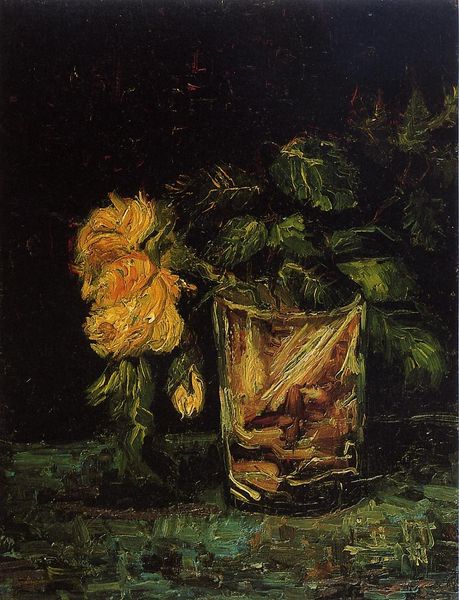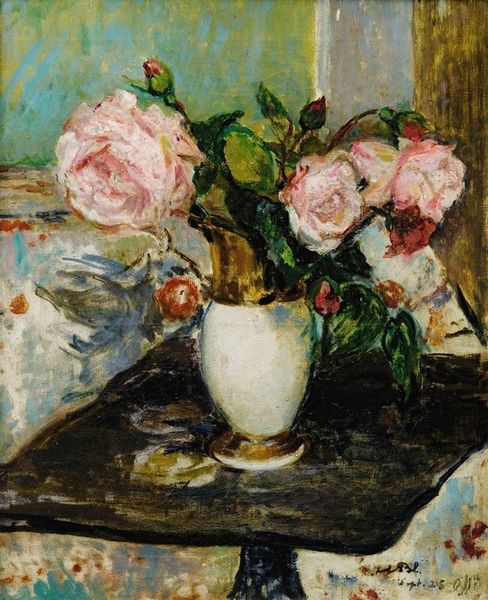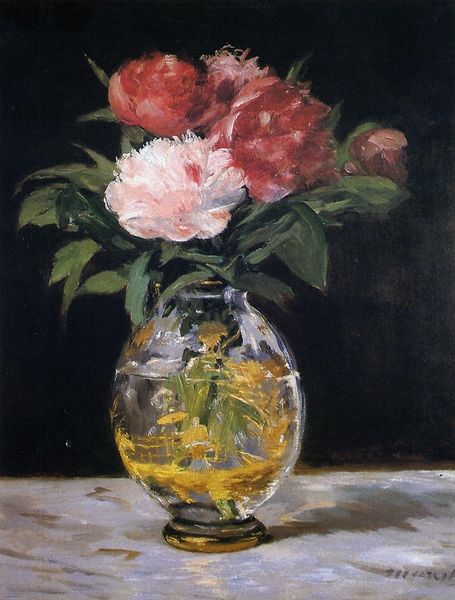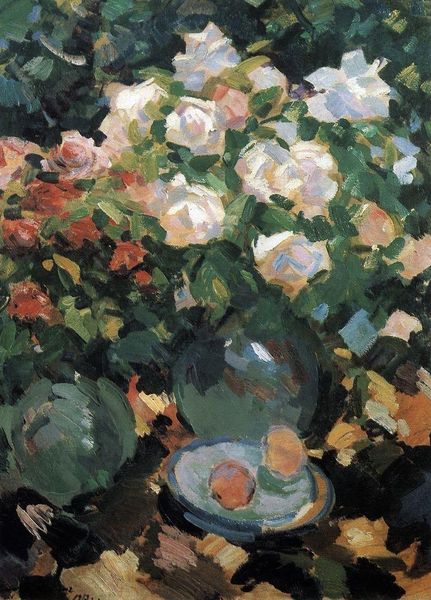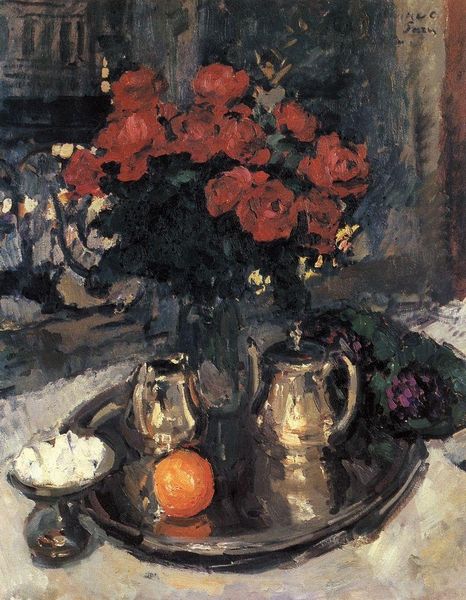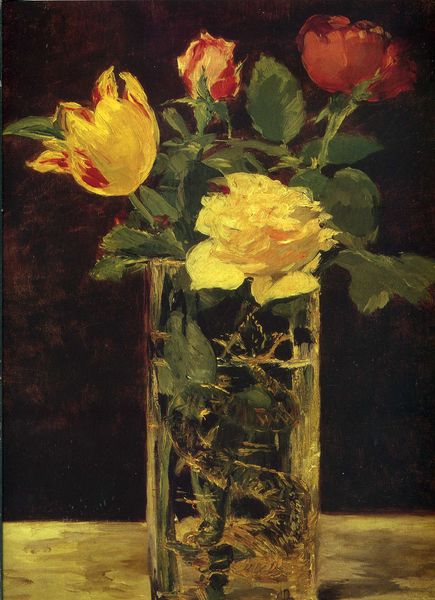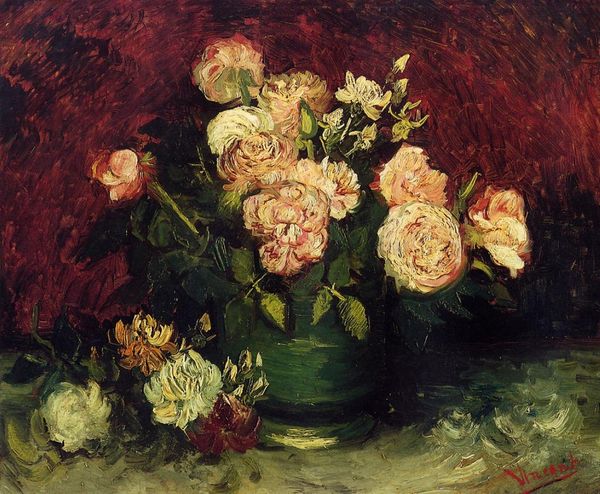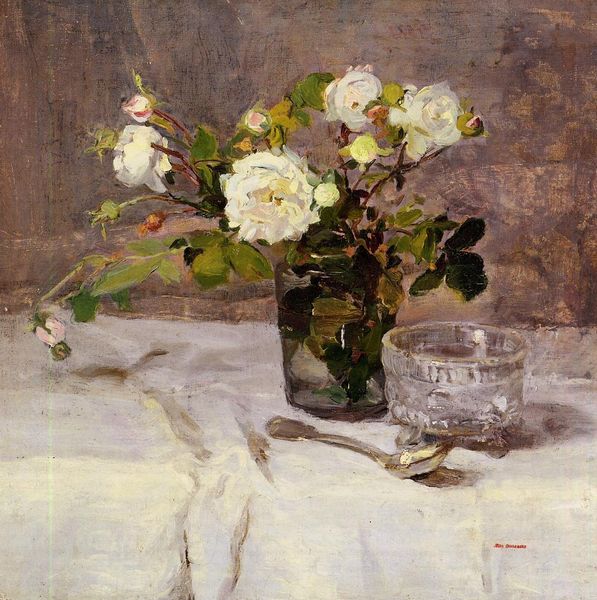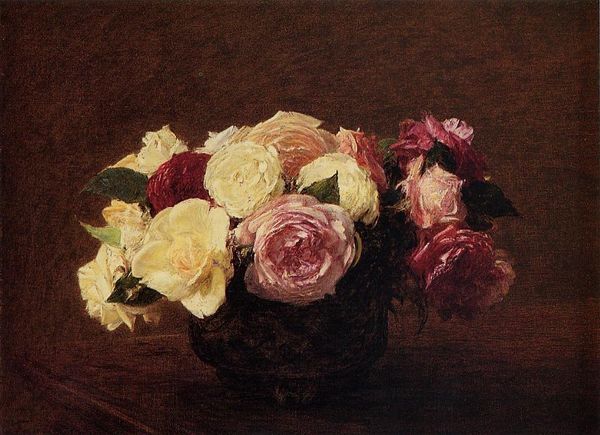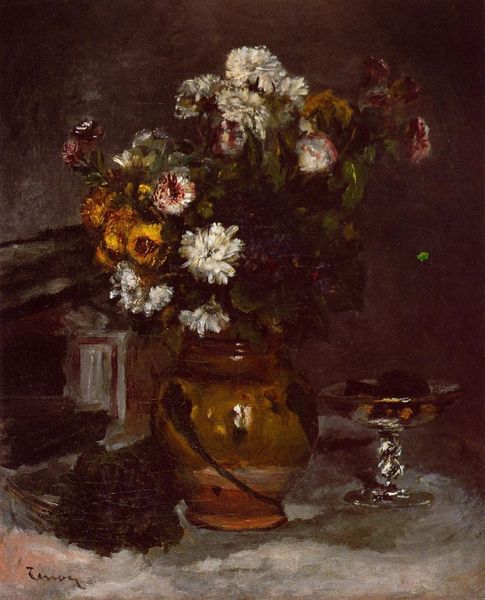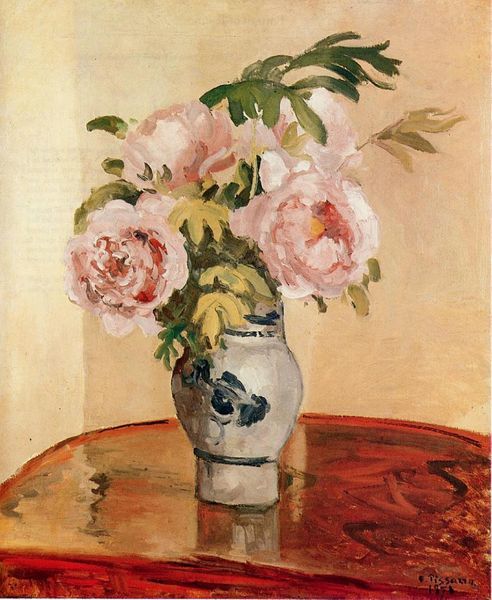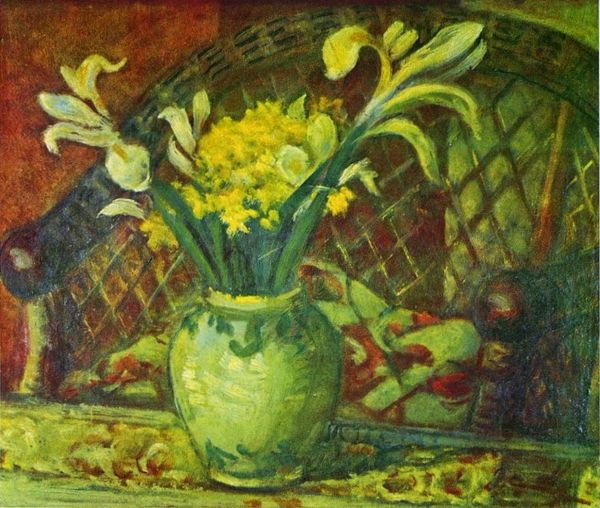
painting, plein-air, oil-paint
#
painting
#
impressionism
#
plein-air
#
oil-paint
#
flower
#
impressionist landscape
#
oil painting
#
plant
Copyright: Public domain
Curator: This is Childe Hassam’s “Roses in a Vase,” completed in 1890. You’ll notice the use of oil paint, characteristic of his plein-air and Impressionist style. Editor: It strikes me as immediately melancholic. The palette is muted, even somber. The roses, beautiful as they are, seem to be fading. Curator: Precisely. Let's look at the formal elements contributing to that feeling. Notice the brushstrokes—short, broken, yet deliberate—creating a sense of movement but also a certain dissolution. The composition focuses your gaze on the ephemeral nature of the roses themselves. Editor: It's difficult to separate this portrayal of wilting blooms from broader themes in 19th-century art concerning the decline of social norms. Floral paintings were typically a domestic object during this era and considered as feminine art. By choosing flowers in their demise, Hassam might imply ideas on female emancipation as beauty cannot be contained within four walls, which were key to women finding spaces to explore and express in that era. Curator: An intriguing perspective! The transparency of the vase and its reflections invite us to consider spatial relationships. It allows us to look through, which encourages movement and dynamism. Editor: Though let us consider how that transparency, coupled with the water within, also blurs the flowers—their contours aren't perfectly crisp. This reminds me of shifting identities present within rapidly industrializing cities; there is beauty in change. Are we ever really in focus? Or do we exist in blurry liminality as we continue to move towards an elusive ideal. Curator: It's interesting you mention an ideal, considering the composition itself denies that reading. There is a great play of dark versus light creating movement around a still moment that never fully exists as perfect. This aligns to core semiotic concerns about what signifiers do to construct meanings. Editor: It truly opens up a dialogue, doesn't it? From fleeting beauty to urban reflections, this piece gives me much to contemplate. Curator: I agree. Hassam's composition, so attentive to color and light, speaks to artistic mastery within the context of modern artistic expressions.
Comments
No comments
Be the first to comment and join the conversation on the ultimate creative platform.
